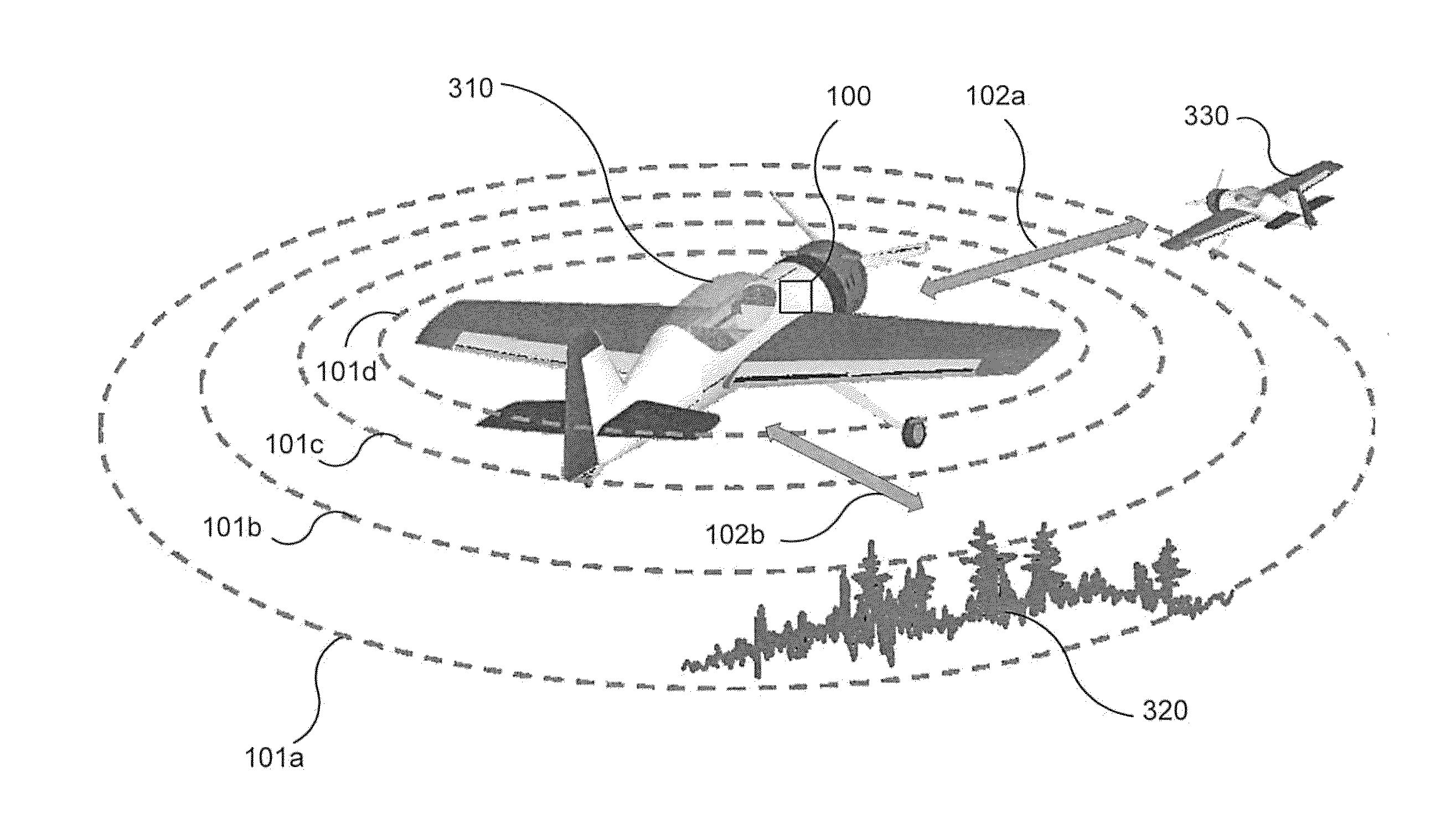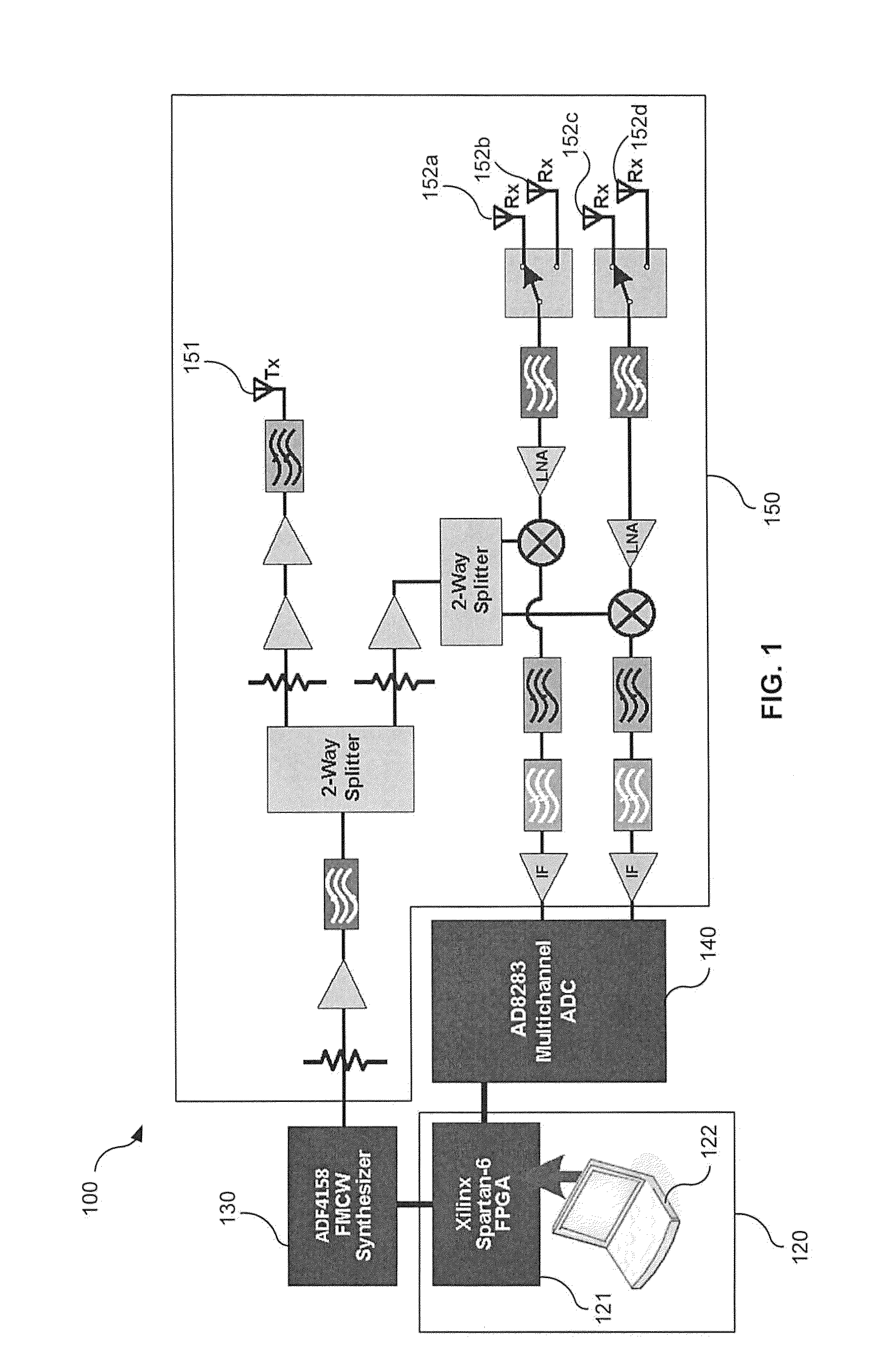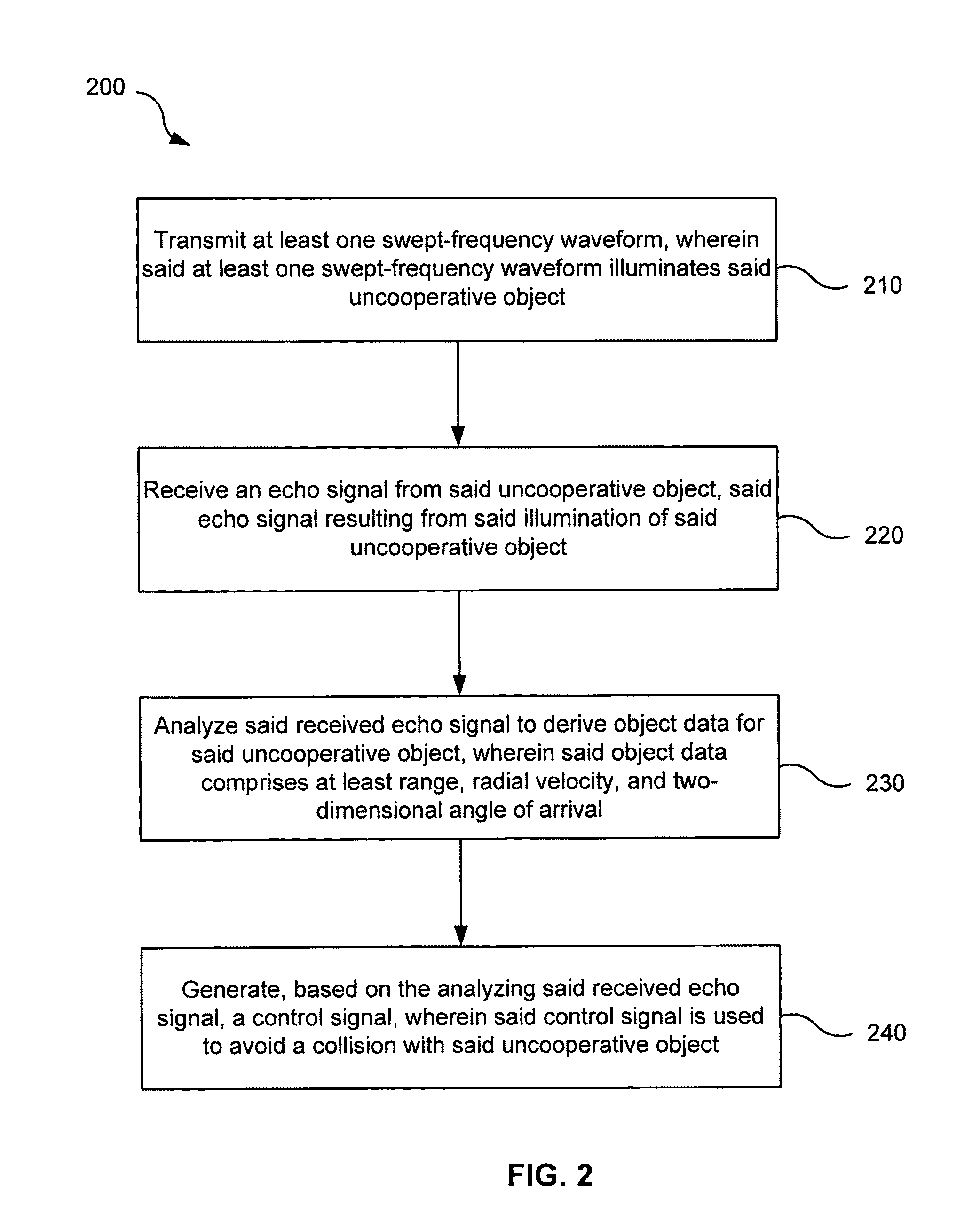Sense-and-avoid systems and methods for unmanned aerial vehicles
a technology for unmanned aerial vehicles and systems, applied in the direction of instruments, measurement devices, and reradiation, etc., can solve the problems of inability to sense and avoid other aircraft with specialized equipment, inability to sense and avoid other aircraft, and inability to meet the needs of society,
- Summary
- Abstract
- Description
- Claims
- Application Information
AI Technical Summary
Benefits of technology
Problems solved by technology
Method used
Image
Examples
example embodiment
[0064]In another example embodiment, a sense-and-avoid system may be flown on a UAV surrogate to detect uncooperative objects, such as intruder aircraft. For example, the example sense-and-avoid system may be flown in a piloted Cessna C172, and candidate intruder aircraft may include a 40% Yak-54 UAV (as shown in FIG. 1). Those skilled in the art will appreciate that other manned and unmanned general-aviation aircraft may be used as intruder aircraft and as a UAV surrogate. In embodiments, the example sense-and-avoid system may be implemented to detect a potentially hazardous stationary structure (e.g., a radio tower). In other embodiments, the example sense-and-avoid system may be miniaturized and installed on a 40% Yak-54 UAV. The 40% Yak-54 UAV is a radio controlled, commercial off-the-shelf (COTS) hobby-grade aircraft that has been equipped with an autopilot and telemetry instrumentation, which may be primarily used for training and research. Table 2 lists the specifications of ...
PUM
 Login to View More
Login to View More Abstract
Description
Claims
Application Information
 Login to View More
Login to View More - R&D
- Intellectual Property
- Life Sciences
- Materials
- Tech Scout
- Unparalleled Data Quality
- Higher Quality Content
- 60% Fewer Hallucinations
Browse by: Latest US Patents, China's latest patents, Technical Efficacy Thesaurus, Application Domain, Technology Topic, Popular Technical Reports.
© 2025 PatSnap. All rights reserved.Legal|Privacy policy|Modern Slavery Act Transparency Statement|Sitemap|About US| Contact US: help@patsnap.com



